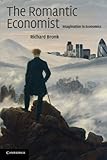The romantic economist : imagination in economics
Material type: TextPublication details: Delhi Cambridge Universirty Press 2009Description: 382pISBN:
TextPublication details: Delhi Cambridge Universirty Press 2009Description: 382pISBN: - 9780521735155
- 330 BRO
| Item type | Current library | Collection | Call number | Status | Date due | Barcode | |
|---|---|---|---|---|---|---|---|
 Book
Book
|
Plaksha University Library | Economics | 330 BRO (Browse shelf(Opens below)) | Available | 001971 |
Since economies are dynamic processes driven by creativity, social norms, and emotions as well as rational calculation, why do economists largely study them using static equilibrium models and narrow rationalistic assumptions? Economic activity is as much a function of imagination and social sentiments as of the rational optimisation of given preferences and goods. In this book, Richard Bronk argues that economists can best model and explain these creative and social aspects of markets by using new structuring assumptions and metaphors derived from the poetry and philosophy of the Romantics. By bridging the divide between literature and science, and between Romanticism and narrow forms of Rationalism, economists can access grounding assumptions, models, and research methods suitable for comprehending the creativity and social dimensions of economic activity. This is a guide to how economists and other social scientists can broaden their analytical repertoire to encompass the vital role of sentiments, language, and imagination.
There are no comments on this title.

